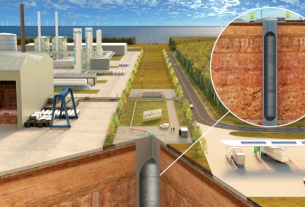Europe – A large group of civil society and private sector stakeholders from the Netherlands, Belgium, and North Rhine-Westphalia has called on the national and regional governments of the Netherlands, Belgium, Flanders, Wallonia, Germany, and North Rhine-Westphalia to intensify and accelerate their collaboration on industrial transformation planning.
The group is calling for a shared vision and strategy to build a CO2 transportation and storage infrastructure that will speed up industrial decarbonization and structural emission reductions. Along with an expanded electric grid and hydrogen pipelines, this is an essential component of climate-neutral infrastructure.
Governments must take the lead in anticipating the cross-border infrastructure that will be required to achieve large-scale emission reductions. Companies rely on the government to ensure the enabling infrastructure as society relies on industry to decarbonize. This is a challenge in both infrastructure and climate policy, as well as a private and public matter.
Meeting goals
The climate crisis is one of our generation’s most important and pressing issues. The IPCC Special Report on 1.5°C Global Warming demonstrates that the next ten years are critical for reducing greenhouse gas emissions. Heavy industry, among other sectors, faces significant challenges in transforming and aligning with international and European climate targets, necessitating immediate action. The European Green Deal aims to cut greenhouse gas emissions by 55% by 2030 and reach net zero by 2050 in the European Union.
North-western European industrial clusters produce a significant portion of Europe’s basic materials. The ARRRA cluster (Antwerp-Rotterdam-Rhine-Ruhr Area) produces 40% of all chemicals produced in Europe. In this region, steel and cement companies are also highly integrated. Because the companies in the cluster are interdependent, they have similar needs and face similar challenges when it comes to reducing emissions. Companies in the ARRRA cluster must comply with the European Green Deal’s net-zero and circularity objectives to combat climate change, fulfill their societal role, and remain competitive in the future.
While the letter emphasizes carbon capture and storage as a part of the solution, the signatories acknowledge that businesses have a portfolio responsibility in the transition to net zero emissions. Measures that decarbonize production processes, such as energy efficiency, electrification with renewable energy, and circular production processes, should be prioritized in such a “and-and” approach. At the same time, they recognize that carbon capture and utilization (CCU) for long-lived and recyclable products, as well as carbon capture and storage (CCS), are additional solutions for meeting the 2030 and 2050 climate targets.
Calls for action
A cross-border CO2 transport and storage infrastructure working group has been established as part of the call for action. This working group should facilitate ongoing knowledge exchange and joint planning between relevant authorities, develop a common vision, policy, and rulebook for cross-border CO2 infrastructure deployment, and align authorization procedures in close consultation with private and civil society stakeholders.
It also calls for the establishment of CCS framework conditions. Examine the entire scope of CCS-needs in the integrated ARRRA industrial cluster over the short, medium, and long term, taking into account the risks of stranded assets and lock-ins. The group also calls for the creation of a common legal framework to ratify the London Protocol and the negotiation of international agreements between the Netherlands, Belgium, and Germany for the cross-border transport of CO2 in accordance with the London Protocol.
The group has also advocated for the creation of a joint funding mechanism to assist in the organization of financial instruments at the local, national, and EU levels to address CO2 infrastructure needs by combining public and private funding. Governments are also being urged to recognize and standardize the multi-modal and multi-purpose nature of CO2 transportation and storage infrastructure, as well as the deployment of new infrastructure and the retrofitting of existing onshore and offshore infrastructure where appropriate. The government is also being urged to ensure that infrastructure can be expanded to connect to other inland industrial clusters.




